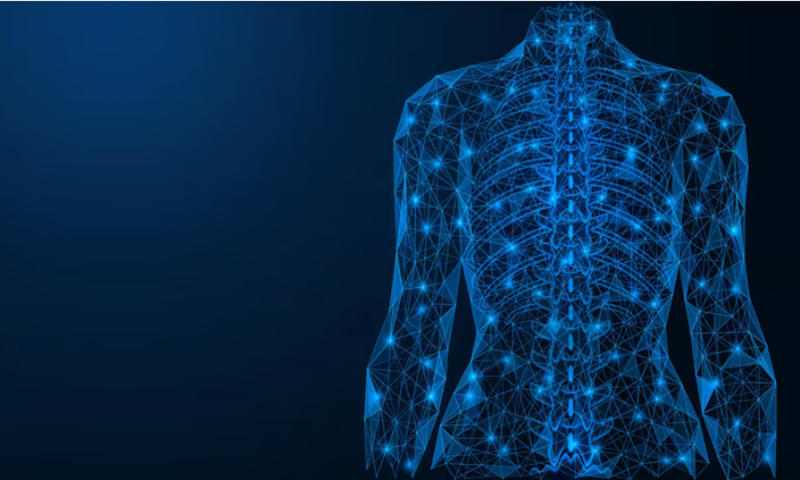Spinal cord stimulators have been used since the 1960s, and the first FDA approval for one of the devices arrived in 1989—all with a focus on treating various forms of chronic pain. In more recent years, however, researchers have begun studying the technology’s potential to address other conditions including those affecting movement.
The latest of those studies, published this week in Nature Medicine, tracked the effects of spinal cord stimulation in improving upper-limb movement for people experiencing partial paralysis after a stroke. Though the treatment was given to only two patients, it led to immediate improvements in both participants’ arm and hand mobility.
Neurostimulation implants include metal electrodes that are placed in specific areas on the surface of the spinal cord. There, they emit electrical impulses that are meant to stimulate the nerves that run throughout the spinal cord, the brain and the rest of the body—with an aim of interrupting pain signals or, in this case, prepping the nerves to receive movement-related signals.
The study was conducted by researchers from the University of Pittsburgh and Carnegie Mellon University, and it was backed by funding from the National Institutes of Health’s (NIH’s) neurotech-focused BRAIN initiative. Its two participants were each implanted with a two-lead spinal cord stimulation system for 29 days.
From early on, as the continuous stimulation began, the patients experienced significant improvements in the strength and range of motion of their arms and hands. According to the study, they ultimately registered improvements of 40% and 108%, respectively, in their grip force, while the average speed of their movements rose between 30% and 40%.
The therapy also improved the types of functions the patients were able to perform, restoring the ability to lift their arms, open and close their fists and pick up items as well as more complex tasks like using utensils to feed themselves and opening a lock, according to an NIH release.
Some of the effects lasted for several weeks after the therapy period had ended and the devices were removed, according to Marco Capogrosso, Ph.D., an assistant professor of neurological surgery at the University of Pittsburgh and a co-senior author of the study. In a University of Pittsburgh press release, Capogrosso noted that the enduring benefits of the treatment may be “even more interesting” than its immediate success and suggest “exciting avenues for the future of stroke therapies.”
Those long-term effects are particularly promising since, according to the NIH, there are currently no effective treatments for paralysis during what’s known as the chronic stage of stroke, a slowed-down period of recovery that begins about six months after the onset of a patient’s first stroke symptoms. About a quarter of all adults over the age of 25 are expected to experience a stroke in their lifetime, and the vast majority of them will have long-lasting impairments of the arm and hand.
“Creating effective neurorehabilitation solutions for people affected by movement impairment after stroke is becoming ever more urgent,” said Elvira Pirondini, Ph.D., another senior author of the study and an assistant professor of physical medicine and rehabilitation at University of Pittsburgh, in the release.
The treatment method must now be expanded to a much larger trial to give researchers a better idea of its feasibility and safety as well as which stroke patients stand to benefit the most. Even so, they noted, the preliminary results are already encouraging, not only for the therapeutic effects of the treatment but also because their method built on existing spinal cord stimulation devices.
“Thanks to years of preclinical research building up to this point, we have developed a practical, easy-to-use stimulation protocol adapting existing FDA-approved clinical technologies that could be easily translated to the hospital and quickly moved from the lab to the clinic,” Capogrosso said.

